Roof inspections are essential for maintaining the integrity of your home, with typical costs ranging from $100 to $500. Factors such as roof size, type, and inspection complexity can significantly influence these prices. By understanding these variables, homeowners can effectively budget for inspections and any necessary repairs that may arise from the findings.
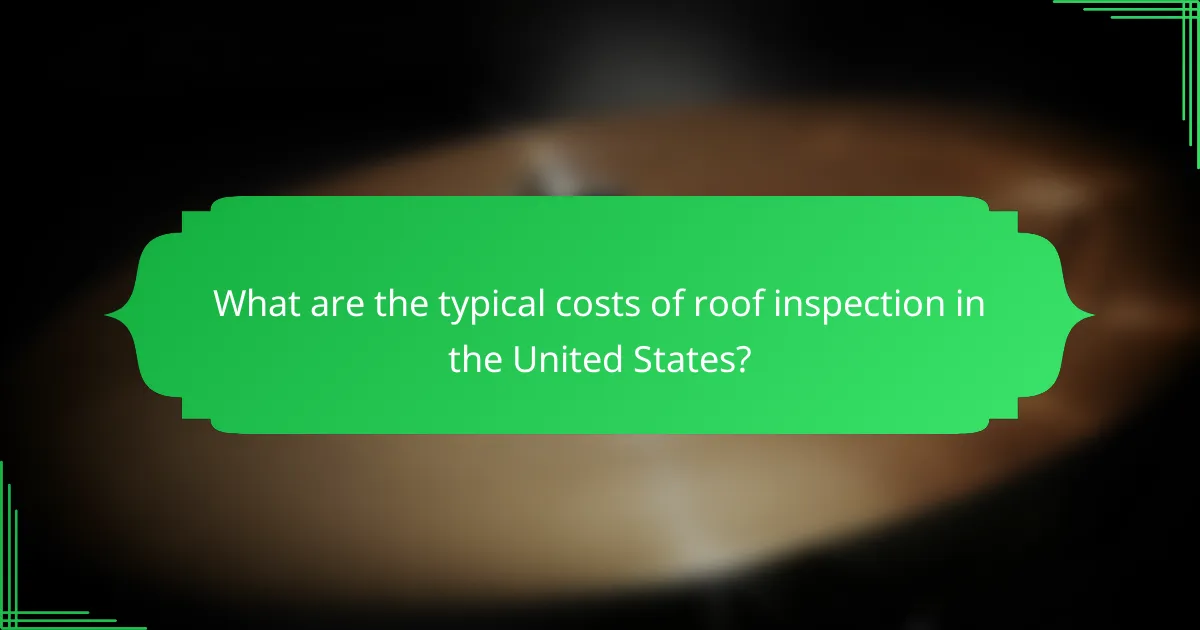
What are the typical costs of roof inspection in the United States?
The typical costs of roof inspection in the United States generally range from $100 to $500, depending on various factors such as the size of the roof and the complexity of the inspection. Homeowners should budget for these inspections to ensure they maintain their roofs effectively and address any potential issues early.
Average cost range
The average cost for a roof inspection typically falls between $150 and $300. Basic inspections may be on the lower end of this range, while more detailed assessments, including infrared scans or drone inspections, can push costs higher. It’s advisable to get quotes from multiple inspectors to find a fair price.
Factors influencing cost
The inspector’s experience and qualifications also play a role. Certified inspectors or those with extensive experience may charge higher fees, but their expertise can provide greater assurance of a thorough inspection. Geographic location can also impact pricing, with urban areas often having higher rates than rural regions.
Regional price variations
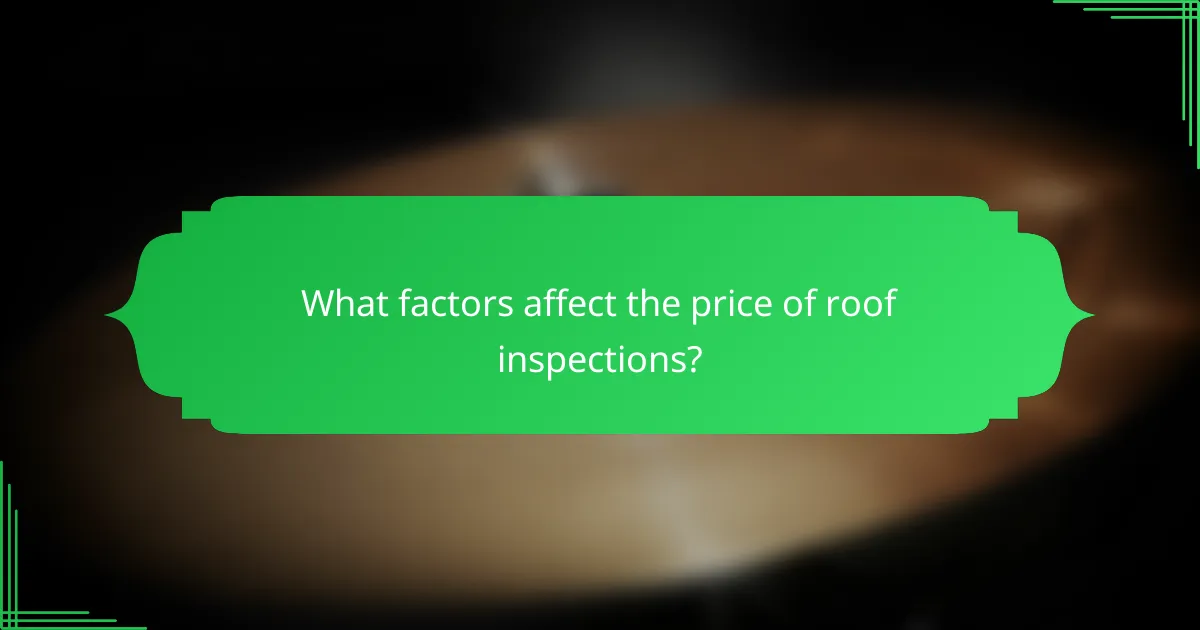
What factors affect the price of roof inspections?
The price of roof inspections can vary significantly based on several key factors, including the type of roof, the complexity of the inspection, and any accessibility challenges. Understanding these elements can help homeowners budget appropriately and anticipate potential costs.
Roof type and material
The type of roof and the materials used play a crucial role in determining inspection costs. For instance, a simple asphalt shingle roof may cost less to inspect compared to a complex slate or tile roof, which requires more specialized knowledge and tools. Generally, inspections for flat roofs can also be more expensive due to the additional considerations involved.
Homeowners should consider that different materials may have varying lifespans and maintenance needs, which can influence the frequency and thoroughness of inspections. For example, metal roofs might require less frequent inspections than older wooden roofs, potentially affecting overall costs.
Inspection complexity
The complexity of the inspection itself can significantly impact the price. A standard visual inspection is usually less expensive than a comprehensive assessment that includes detailed measurements and testing for leaks or structural integrity. If the roof has multiple layers or requires specialized equipment, expect higher fees.
Complex inspections may also involve checking for issues like ventilation, insulation, and drainage, which can add to the overall cost. Homeowners should weigh the benefits of a thorough inspection against the potential expenses, particularly if they suspect underlying problems.
Accessibility issues
Accessibility can greatly influence the cost of roof inspections. If a roof is difficult to reach due to height, steepness, or surrounding structures, inspectors may charge more for the additional safety measures and equipment required. For example, roofs that necessitate scaffolding or ladders may incur extra fees.
Homeowners should ensure that their roofs are accessible for inspections to avoid unexpected costs. Clearing away obstacles like overhanging branches or debris can facilitate a smoother inspection process and potentially lower fees.
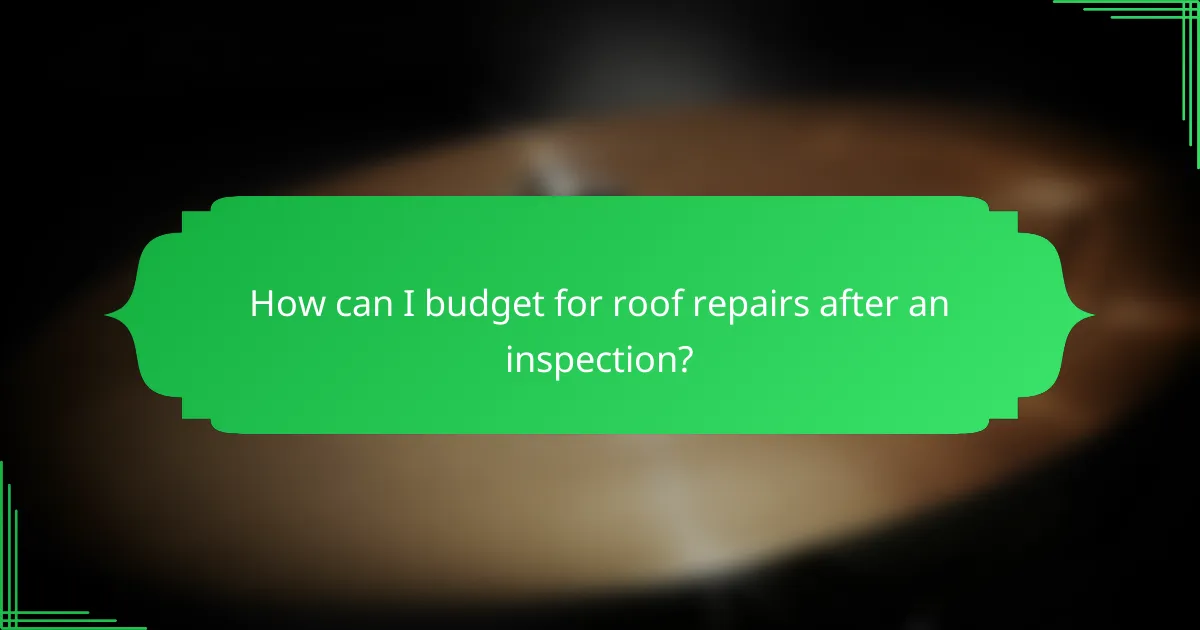
How can I budget for roof repairs after an inspection?
To budget for roof repairs after an inspection, start by estimating potential costs based on the inspection findings, then set aside funds specifically for these repairs. Understanding your insurance coverage can also help mitigate out-of-pocket expenses.
Estimating repair costs
Estimating repair costs involves reviewing the inspection report to identify necessary repairs and their potential costs. Typical roof repairs can range from a few hundred to several thousand dollars, depending on the extent of the damage and the materials used. For example, minor leaks may cost around $300 to $600, while more significant issues like structural damage could exceed $2,000.
Consider obtaining multiple quotes from local contractors to get a clearer picture of the market rates. This can also help you identify any unnecessary upsells and ensure you receive fair pricing for the required work.
Setting aside a repair fund
Setting aside a repair fund is crucial for managing unexpected roof expenses. A common recommendation is to allocate 1% to 3% of your home’s value annually for maintenance and repairs. For a home valued at $300,000, this would mean setting aside $3,000 to $9,000 each year.
Establish a separate savings account dedicated to home repairs. Regular contributions to this fund can provide peace of mind and financial readiness when repairs are needed, preventing the stress of sudden costs.
Understanding insurance coverage
Understanding your insurance coverage is essential for budgeting roof repairs. Review your homeowner’s insurance policy to see what types of roof damage are covered, as policies can vary widely. Many policies cover damage from specific perils like storms or fire but may not cover wear and tear.
Contact your insurance agent to clarify any questions about deductibles and coverage limits. Knowing these details can help you plan your budget more accurately and determine if you need to supplement your savings with additional funds for repairs.
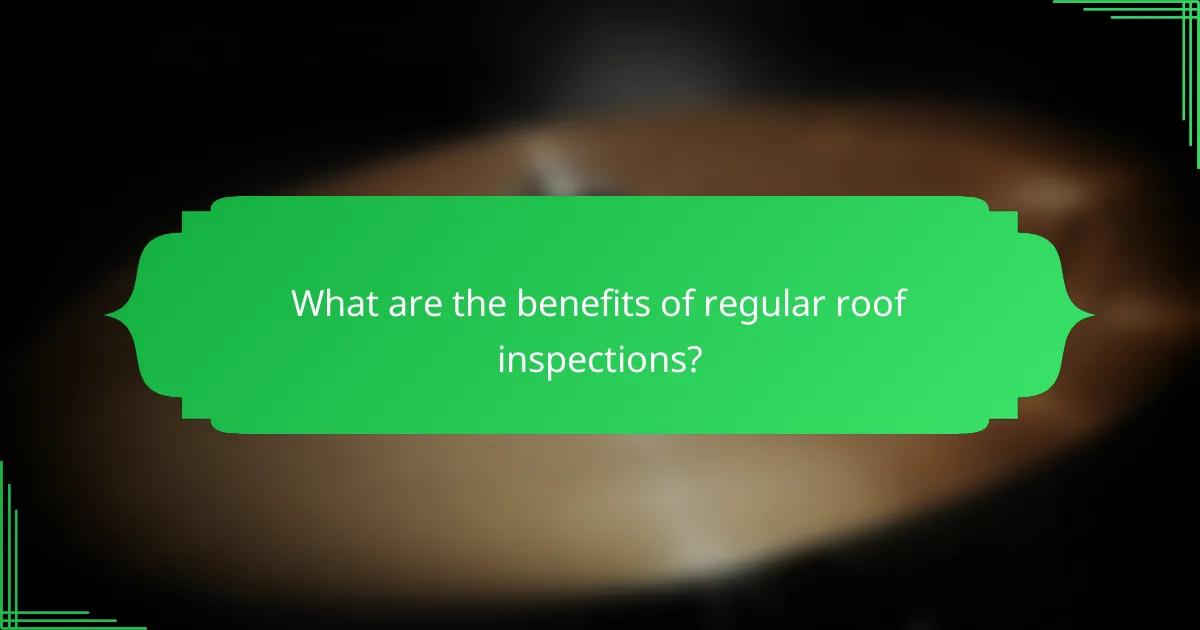
What are the benefits of regular roof inspections?
Regular roof inspections provide essential maintenance that can save homeowners money and extend the life of their roofs. By identifying issues early, property owners can address minor problems before they escalate into significant repairs.
Preventing costly repairs
Regular inspections help detect leaks, damaged shingles, or structural issues before they lead to expensive repairs. For instance, a small leak can cause significant water damage if left unchecked, potentially costing thousands in repairs.
Homeowners should schedule inspections at least once a year, especially after severe weather events. This proactive approach can save money in the long run by avoiding emergency repairs that often come with higher costs.
Extending roof lifespan
Routine inspections can significantly extend the lifespan of a roof by ensuring that it remains in good condition. Addressing minor issues promptly can prevent them from developing into major problems that compromise the roof’s integrity.
For example, maintaining proper drainage and cleaning gutters can prevent water buildup, which is a common cause of roof deterioration. A well-maintained roof can last 20 years or more, while neglect can reduce its lifespan by several years.
Improving property value
A well-maintained roof enhances the overall value of a property. Potential buyers often view a new or recently inspected roof as a significant asset, reducing their concerns about future repairs.
Investing in regular inspections and maintenance can yield a return on investment when selling a home. Properties with documented maintenance history often attract higher offers, as buyers appreciate the peace of mind that comes with a sound roof.
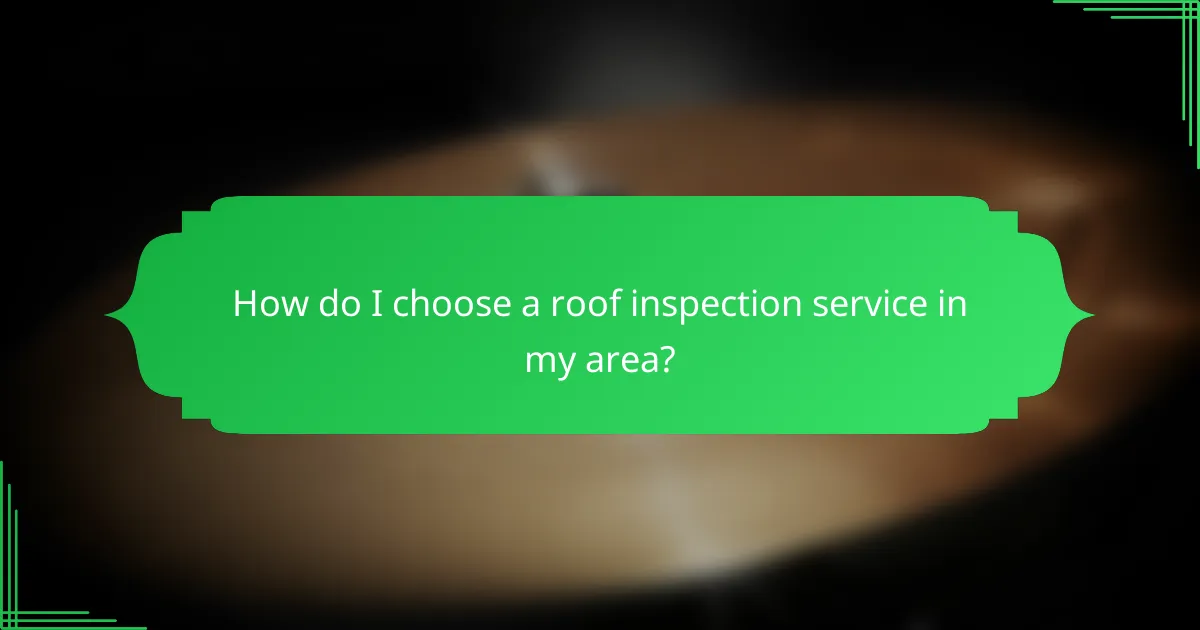
How do I choose a roof inspection service in my area?
To choose a roof inspection service in your area, start by identifying local companies with a good reputation and relevant experience. Consider factors like service offerings, pricing, and customer feedback to ensure you select a reliable provider.
Researching local companies
Begin your search by looking for roof inspection companies within your local area. Use online directories, local business listings, and community boards to compile a list of potential candidates. Focus on companies that have been in business for several years, as longevity often indicates reliability.
Check if the companies are licensed and insured, which protects you from liability in case of accidents during the inspection. Additionally, inquire about their certifications and training to ensure they adhere to industry standards.
Checking reviews and ratings
Once you have a list of local companies, check online reviews and ratings on platforms like Google, Yelp, or Angie’s List. Look for patterns in customer feedback, such as punctuality, thoroughness, and professionalism. A company with consistently high ratings is more likely to provide quality service.
Pay attention to any negative reviews, especially those that mention issues with follow-up or hidden costs. This can help you avoid companies that may not be transparent about their pricing or service quality. Aim to choose a service that has a strong overall reputation and addresses any concerns raised by previous customers.
